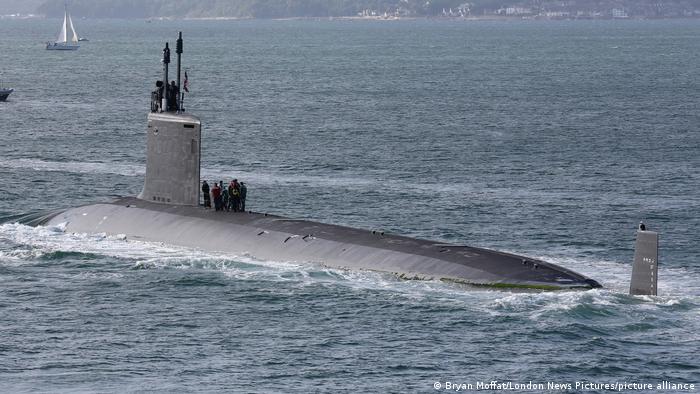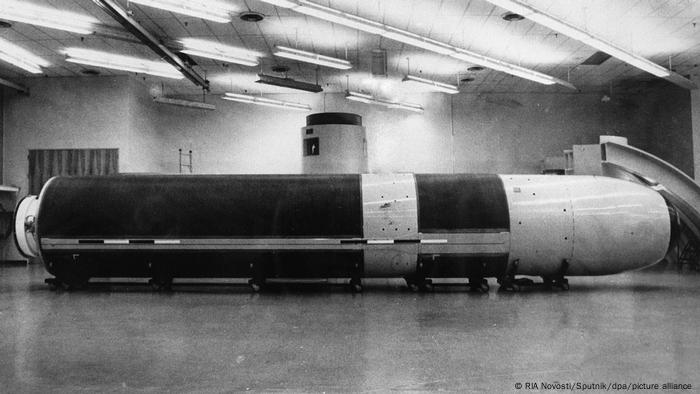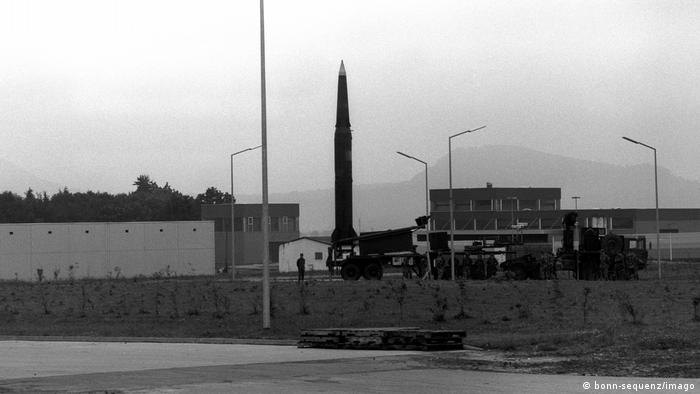[ad_1]
They were a symbol of the Cold War, but suddenly nuclear weapons have returned to the public spotlight. How does the intimidation system and protection from these weapons work?
When Russian President Vladimir Putin put the Russian nuclear force “on a special alert regime” at the start of the war in Ukraine, there was great concern in Europe. The second step after Western warnings was: Putin sent Russian submarines armed with nuclear weapons and mobile missile units into maneuver in early March.
Is Putin threatening his opponents in the West with a nuclear attack? With more than 6,300 nuclear warheads, Russia holds the largest nuclear arsenal in the world. Of NATO partners, the US has the largest nuclear force with about 5,800 nuclear warheads. France is said to have almost 300 heads, the UK about 215. But there are no exact figures, in terms of nuclear programs, because states keep a lot of secret information.
How is Europe protected from a nuclear attack?
Even if there is talk of a “nuclear shield” from the US, a nuclear attack in Europe can not be prevented militarily. On the contrary, the “shield” is based on the assumption that the adversary would not dare to attack NATO countries with nuclear weapons, because he would have to count on a counterattack.
Such a military response could be ordered and executed by any NATO nuclear power: the US, Britain and France. All three states have strategic nuclear weapons that can be shot down by nuclear submarines, among others, and thus enable a counterattack in any possible scenario.
Psychology of intimidation
NATO nuclear powers follow various preventive concepts. France and the UK rely on the so-called minimum precaution. They do not envisage a nuclear exchange lasting several days. They have the ability to retaliate or stop the enemy with a “final warning shot” (France).
The US, on the other hand, relies on a broader prevention, including reduced nuclear weapons. The idea behind this is that US military planners are considering, at least in theory, the possibility of a “limited nuclear war.”
From a legal point of view, it should be noted that almost any use of a nuclear weapon with its massive effects on civilians would violate international humanitarian law. On the other hand, one of the theoretically imaginable exceptions could be a limited nuclear attack on an offshore warship.
How does Germany participate in prevention?
Germany participates in nuclear prevention in Europe with Tornado fighter jets from the Luftwaffe, which are based in Büchel in the Rhineland-Palatinate. In the event of an emergency, aircraft with a German crew would fly with US nuclear weapons toward the target. At least once a year, Bundeswehr pilots practice throwing U.S. atomic bombs.
In addition to Germany, the Netherlands, Belgium and Italy also participate in what is known as NATO nuclear participation. According to reports, between 100 and 150 certified and relatively inaccurate gravity bombs are currently stored in Europe. “Bombs are a relic of a bygone era that has little military significance today,” said Peter Rudolf, a political scientist at the Stiftung Wissenschaft und Politik (SWP) in Berlin, who researches nuclear prevention. However, to be able to use them, one must first eliminate the enemy air defenses, which at best seems conceivable in a major war.
Participation in nuclear weapons
Although there are many critics of participating in nuclear weapons in the ruling coalition, Chancellor Olaf Scholz does not see Germany’s contribution to nuclear prevention as an option. Shortly after Russian troops entered Ukraine, Scholz promised to buy American F35 fighter jets to replace the old Tornadoes, which will soon have to retire.
Last year, the United States began producing an elaborate version of the gravity bomb, which, among other things, is said to be more accurate.
Even if politicians still consider participation in nuclear weapons as an important political symbol, it had a much greater significance for Germany during the Cold War than it does today. At the time of the Warsaw Pact, Germany could have been the central battleground of an armed conflict with NATO. Nuclear participation gave the federal government in Bonn the opportunity to exert at least limited influence on the Alliance’s nuclear strategy.
Who plans to use nuclear weapons?
NATO has had a Nuclear Planning Group (NPG) since 1966, which discusses scenarios for the use of nuclear weapons. All NATO countries are now represented in the NPG – with the exception of France, which is following in its footsteps. The body meets at least once a year at the level of defense ministers and, if necessary, at the level of ambassadors.
Recent political guidelines on the use of nuclear weapons by NATO are not publicly known. The last document dates from the 1980s. “NATO always says it is a nuclear alliance, but apparently it has no nuclear doctrine. “What is being discussed in the nuclear planning group is not known to others,” analyzes political scientist Rudolf. Even if there are repeated debates about it in the US, NATO has not yet given up the possibility of using nuclear weapons for the first time.
Who decides on the use of nuclear weapons?
The US president initially decides on the use of US nuclear weapons stored in Germany, Italy, Belgium and the Netherlands. He would give permission for the use of bombs and the country from which they are used (eg Germany). Prior to deployment and use, there should be consultation with other NATO allies in the North Atlantic Council.
The French president decides only on the deployment of the French nuclear force. In the United Kingdom, decision-making power rests with the British Prime Minister. The three nuclear weapons decision-making centers are considered a preventative element.
Use in the Ukrainian war?
Russian military doctrine does not completely rule out the use of tactical nuclear weapons on the battlefield. Russia has such weapons, as does the United States. A possible use of such tactical nuclear weapons over the Black Sea was discussed in the media after the Russian occupation of Ukraine, but so far Western military observers have no indication that the Russian military is considering the use of tactical or sub-strategic nuclear weapons.
“The Russian threat has a mainly political function,” said Rudolf, a political scientist. “It’s a message to the United States not to intervene beyond a certain border in Ukraine.” There have been similar nuclear weapons threats in connection with the annexation of Crimea eight years ago.
Nuclear weapons against chemical weapons
Chemical weapons are prohibited by international law, the Chemical Weapons Convention. Russia officially destroyed its last chemical warhead almost five years ago. The United States wants to achieve that goal next year. Unlike chemical weapons, which were also used after World War II (most recently in the Syrian civil war), there was no further use of nuclear weapons. For the last time they have been dumped in Japan, in Hiroshima and Nagasaki.
top channel
[ad_2]
Source link


















